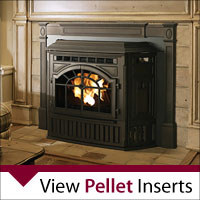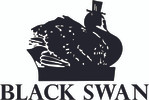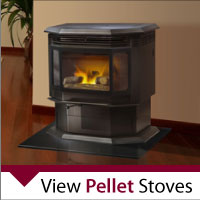What is Pellet Fuel?
 Pellet fuel is a renewable, clean-burning and cost stable home heating alternative currently used throughout North America. It is a biomass product made of renewable substances - generally recycled wood waste. Pellet fuel is a way to divert millions of tons of waste from landfills and turn it into energy. There are approximately 800,000 homes in the U.S. using wood pellets for heat, in freestanding stoves, fireplace inserts and even furnaces. Pellet burners and fuel are available through our store.
Pellet fuel is a renewable, clean-burning and cost stable home heating alternative currently used throughout North America. It is a biomass product made of renewable substances - generally recycled wood waste. Pellet fuel is a way to divert millions of tons of waste from landfills and turn it into energy. There are approximately 800,000 homes in the U.S. using wood pellets for heat, in freestanding stoves, fireplace inserts and even furnaces. Pellet burners and fuel are available through our store.
To get information about or to purchase pellets, please call our staff toll free at (877) 426-1819.
Burning the Fuel
Pellet fuel for home heating can be burned in a freestanding pellet stove, fireplace insert or a furnace. A pellet stove looks much like a wood stove, but is automated. Heating a home with pellet fuel requires only the ability to add pellets into a hopper, set the desired heat output and provide necessary appliance maintenance, such as cleaning out an ash pan. All other aspects of the heating process occur automatically. Pellet stoves and fireplace inserts come in a wide range of styles, sizes and finishes.
Benefits of Pellets
Wood pellets were first engineered in the 1970s in response to an energy shortage in the U.S. and are generally manufactured from wood waste generated in saw mills, furniture manufacturing facilities, paper mills, etc. Burning wood pellets can be used as a substitute for electricity; wood-fueled fireplaces and stoves; or fossil fuels, such as propane or natural gas. Pellet fuel is burned in appliances, such as freestanding stoves, fireplace inserts, furnaces or commercial burners.
Convenience
- Clean and allergy-free. No dust or dirt is brought into the home with pellet fuel.
- Stored in less space. Four times more pellet fuel can be stored in a given space than cordwood or wood chips. A winter's supply of pellets for an average home occupies a space roughly 6' x 6' x 6', which makes them easy to store in a small area of a dry garage, basement, utility room or shed.
- Easy to use. Load once a day. Precisely regulated fuel feed automatically operates the stove according to owner-determined settings.
Efficiency
- More efficient fuel than cordwood. Pellets have five to 10 percent moisture content in comparison to 30 to 60 percent for cordwood and woodchips. This means pellets are a more efficient fuel.
- Higher Btu content than cordwood. Wood pellets have a Btu output content of 350,000 per cub. Ft. of fuel, versus 70,000 to 90,000 for cordwood or wood chips. This means pellets produce more heat.
Environmental
- All natural fuel. Once compressed and dried, pellets hold their form with natural lignin, which means no glue or binders are required.
- Cleaner burn. Pellet fuel has proven to provide the cleanest burn of any solid fuel. Pellet stoves exhaust an average of 1.2 particulate grams per hour - well below the United States EPA woodburning limit of 7.5 grams. This is because the combustion air can be easily regulated, which optimizes the burn efficiency, and because of pellet's low moisture content.
Sustainability
- Energy from waste. Pellet fuel is made of waste products, such as pallets and manufacturing excess. It is a practical way to utilize biomass materials from sustainable forest initiatives, especially for commercial applications
- Other Biomass products. Cornstalks, straw, wastepaper and even animal waste can be converted into pellets.
Ready to place an order? Learn more about the different pellets available or call to place your order. (203) 426-1230


